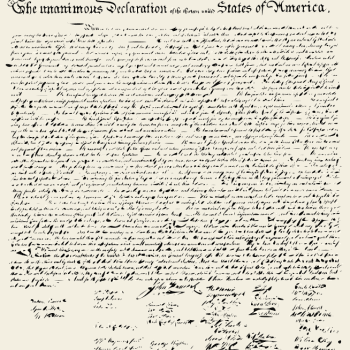Theologians have long talked about the limits of our finite human reason when it comes to comprehending the infinite God. Now scientists are up against the limits of our finite human reason when it comes to comprehending finite nature.
Scientific American has a fascinating survey of facts that are “unthinkable” in quantum physics: particles that are in two places at the same time; objects that spin in two opposite directions at the same time; objects that are entangled with each other, so that what happens to one affects the other, no matter how far apart they are; etc.
This is part of an account of how scientists are using computers to propose “unintuitive configurations” that the human mind would be unlikely to come up with.
From Charles Q. Choi, Physicists Unleash AI to Devise Unthinkable Experiments – Scientific American:
The way that all known particles behave can be explained with quantum physics. A major feature of this branch of physics is that the world becomes a vague, bizarre place at its very smallest levels. For example, atoms and other basic building blocks of the universe can exist in states of flux known as superpositions, meaning they can seemingly be located in two or more places at the same time, or spin in opposite directions simultaneously; and with the phenomenon of quantum entanglement, two or more objects can get connected such that what happens to one instantaneously affects whatever is linked to it, no matter how far apart they are in the universe.
The surreal nature of quantum physics can be hard to swallow, even for scientists. The most famous analogy for superposition, Schrödinger’s cat, which presents a cat that may be simultaneously alive and dead, was intended by physicist Erwin Schrödinger to highlight the absurdity of the concept of superposition, not to popularize it. In addition, Einstein famously rebelled against the concept of entanglement, calling it “spooky action at a distance.” Numerous experiments, however, have proved quantum physics’s stranger phenomena over the decades—for instance, Krenn’s advisor Anton Zeilinger helped set the current record distance for entanglement of 144 kilometers, from La Palma to Tenerife in the Canary Islands.
Krenn and his colleagues were having trouble generating a complex form of entanglement where three entities shared three properties. After weeks of educated guesses to produce these so-called Greenberger–Horne–Zeilinger (GHZ) states Krenn says he realized that his intuition was not working, “so maybe a more radical approach would work.”
The answer was a program Krenn named MELVIN. The software takes common building blocks of quantum experiments such as mirrors and holograms and virtually arranges these elements to find unintuitive configurations that achieve whatever goals that researchers desire, such as a specific quantum state. Once it finds a working result, it automatically simplifies the design and reports it to the scientists.
[Keep reading. . .]















